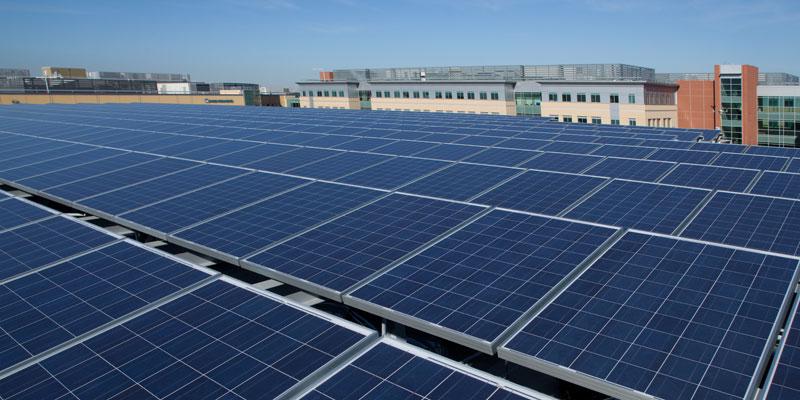Kaiser Permanente Commits to Increasing Onsite Solar Power Generation
Organization cites concerns over climate change and effects on health
OAKLAND, Calif., May 12, 2014 /3BL Media/ - Committed to improving the health of the communities it serves, Kaiser Permanente announced Friday that it will increase its onsite solar generation capacity by as much as 50 megawatts with additional installations planned for its medical campuses and other locations.
The announcement comes days after the White House released its National Climate Assessment report on the effects of climate change in the United States. The scientific report concluded that the impacts of climate change are already being felt in every corner of the United States with increasing numbers of droughts, heat waves, wild fires and torrential rains.
“It’s clear that changes in our climate are having an impact on human health,” said Kathy Gerwig, vice president and environmental stewardship officer at Kaiser Permanente. “Kaiser Permanente is pleased to be acknowledged by the White House for our commitment to reducing our carbon footprint. Harnessing renewable energy to power the care we provide reflects our dedication to improving the health of our members and the communities we serve.”
Greenhouse gas emissions are a known contributor to climate change and the rise of pollution and disease. In 2012, Kaiser Permanente adopted a national sustainable energy policy and launched an ambitious strategy to reduce its greenhouse gas emissions by 30 percent by 2020 (compared to 2008 levels). Developing onsite generation of renewable power plays a significant role in reducing its carbon emissions and meeting its 2020 goal.
Kaiser Permanente has already installed solar panels at 13 locations, including hospitals, medical offices and a distribution center. With a generation capacity of 11.3 megawatts, these arrays generated 18 million kilowatt-hours of electricity in 2013 — equivalent to the electricity use of about 1, 200 average American homes each year.
With this new commitment, Kaiser Permanente will:
- Increase its onsite generation capacity in 2014 with solar installations at many additional locations, including in Hawaii and at its Oakland Medical Center in California and Hidden Lake Medical Offices in Colorado.
- Assess more than 100 of its locations in California for the potential to add onsite solar. The effort could increase the organization’s total onsite generation capacity by as much as 50 megawatts.
Together, these solar initiatives could increase the organization’s onsite renewable generation from 2 percent to between 6 percent and 8 percent of its total electricity requirement in California.
“Pursuing clean energy opportunities is not only the right thing to do for our communities, it makes good business sense,” said Ramé Hemstreet, vice president of facilities operations and Kaiser Permanente’s chief energy officer.
Onsite renewable energy not only reduces carbon emissions, but it protects organizations from the risk of energy-price escalation by locking in costs per kilowatt-hour for 15 to 25 years. Renewables also diversify energy portfolios and support health care providers’ core mission of improving health.
In addition to its onsite use, Kaiser Permanente purchases more than 42 million kilowatt-hours of of renewable energy certificates annually. And, the organization is exploring an opportunity to purchase renewable energy through a large offsite project that could reduce Kaiser Permanente’s carbon footprint by more than 10 percent.
Kaiser Permanente is the largest user of solar power among U.S. health care providers and earned a 2013 Green Power Leadership Award from the U.S. Environmental Protection Agency.
About Kaiser Permanente
Kaiser Permanente is committed to helping shape the future of health care. We are recognized as one of America’s leading health care providers and not-for-profit health plans. Founded in 1945, our mission is to provide high-quality, affordable health care services and to improve the health of our members and the communities we serve. We currently serve approximately 9.1 million members in eight states and the District of Columbia. Care for members and patients is focused on their total health and guided by their personal physicians, specialists and team of caregivers. Our expert and caring medical teams are empowered and supported by industry-leading technology advances and tools for health promotion, disease prevention, state-of-the-art care delivery and world-class chronic disease management. Kaiser Permanente is dedicated to care innovations, clinical research, health education and the support of community health. For more information, go to: kp.org/share.



